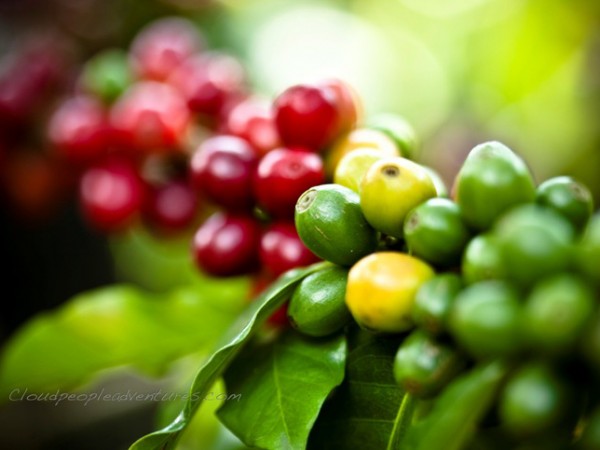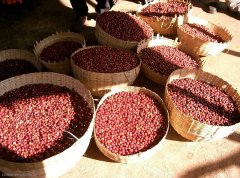Ethiopia Sidamohir Amelie processing Plant Ethiopia Sidamo Chire Ameli

For professional baristas, please follow the coffee workshop (Wechat official account cafe_style)
A kind of coffee that the runner-up in the 2014 World Cup brewing competition likes very much.
The Guji producing area of Sidamo, along the Mora Mora River River in southern Ethiopia, has always been considered to be the original producing area of forest coffee (forest coffee). Administratively, Guji belongs to Oromiya/Oromia in southern Ethiopia, and the local race is the "Gujii Oromo" people. Growing coffee has always been the core of Auromian highland culture. There are several small coffee farms in this area. They gather the cherries together and export them after treatment. The washing plant is Hill Amelie washing Plant (Ch'ire Ameli) in Guji's Nensebo woreda region. More than 800small coffee farmers send cherries to the processing plant, after very strict screening. And then put it on the traditional elevated shed bed for sun treatment. The processed raw beans won the third place with an unbelievably high score of 91.75 in the 2015 Ethiopia National Bean Harvest Competition (Ethiopia National Tate of Harvest Competition).
Taste description: strawberries, blueberries, cherries, peaches, guava, citrus.
36 aromas of coffee: chocolate, blackcurrant, cream, lemon and citrus, caramel
Important Notice :
前街咖啡 FrontStreet Coffee has moved to new addredd:
FrontStreet Coffee Address: 315,Donghua East Road,GuangZhou
Tel:020 38364473
- Prev

Ethiopia Yegashafi-Dumeso Cooperative G2 Coffee Bean Dumerso Cooperatives
For the exchange of professional baristas, please pay attention to the coffee workshop (Wechat official account cafe_style) Ethiopia Yirgacheffe Dumerso Cooperatives G2 comes from the boutique coffee market, Dumerso, a sub-small production area located in the southeast of Yega Sheffield, the coffee beans harvested come from local coffee farmers and are collected.
- Next

Introduction to the style of Kochere Sheepherder Coffee, the Shepherd of Yega Ficher, Ethiopia
With the amazing fruit style of NINETY PLUS, Kochel is a very high-quality coffee in the Yega Sheffield region of southern Ethiopia. Due to the high altitude, wild native coffee, and iron-rich soil, it has active citrus acid, floral aroma, sweet and silky taste, coupled with the famous spice flavor and complex fruit flavor.
Related
- Detailed explanation of Jadeite planting Land in Panamanian Jadeite Manor introduction to the grading system of Jadeite competitive bidding, Red bid, Green bid and Rose Summer
- Story of Coffee planting in Brenka region of Costa Rica Stonehenge Manor anaerobic heavy honey treatment of flavor mouth
- What's on the barrel of Blue Mountain Coffee beans?
- Can American coffee also pull flowers? How to use hot American style to pull out a good-looking pattern?
- Can you make a cold extract with coffee beans? What is the right proportion for cold-extracted coffee formula?
- Indonesian PWN Gold Mandrine Coffee Origin Features Flavor How to Chong? Mandolin coffee is American.
- A brief introduction to the flavor characteristics of Brazilian yellow bourbon coffee beans
- What is the effect of different water quality on the flavor of cold-extracted coffee? What kind of water is best for brewing coffee?
- Why do you think of Rose Summer whenever you mention Panamanian coffee?
- Introduction to the characteristics of authentic blue mountain coffee bean producing areas? What is the CIB Coffee Authority in Jamaica?

